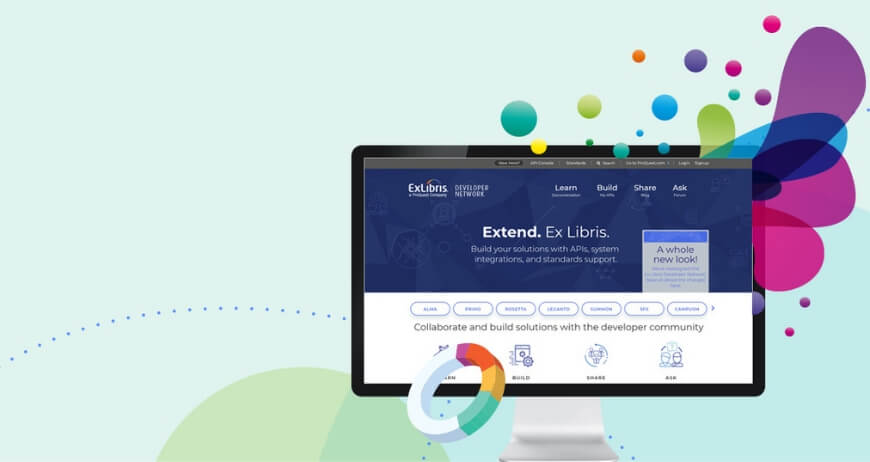Josh Weisman, Ex Libris
This blog post is reposted from the Tech Blog.
When we launched the Ex Libris Developer Network in 2014, it was in the context of our Open Platform Strategy. Since then adoption of the Developer Network has surpassed our most optimistic predictions. A few points to consider:
- There are now over 190 different REST APIs in Alma
- APIs for Primo, Leganto, campusM, and soon Esploro are managed in the Developer Network
- Alma customers make over 4 million REST APIs calls every single day
- Customers received over 700,000 webhooks fired from Alma last month.
- This is on top of SRU, z39.50, SIP2, OAI, and all of the other standards supported by our products
Our commitment to the open platform has only grown stronger in the intervening years. We’ve recently upgraded the infrastructure which handles routing and authentication for all of those API calls. And this updated Developer Network is the latest investment in support of the expanded goal of allowing programmatic access to all of your data and workflows.
I’d like to point out a few features and benefits of the new Developer Network.
Updated, Responsive Design
The new Developer Network features a design that is
- modern
- responsive
- mobile-friendly
Click around and see for yourself.
New API Console
Our new API console is based on the popular OpenAPI specification and Swagger UI. It’s easy to use even for guest accounts, can you can leverage the OpenAPI specifications in your own projects.

Redesigned API Management
The new Developer Network offers a redesigned experience for managing your API keys, and insightful new reports to monitor your API usage. Check them out!


Enhanced Sharing Platform
The new Developer Network makes it even easier to share your story. It features a new blog editor and an author page to show off all of your blog posts. And the forum is also easier to use.
Here’s a short video on how to get started with the new site:
What’s Next?
Over the coming months, we’ll have several more blog posts highlighting ways for you to get the most out of the new Developer Network. In the meantime, you can log in to the Developer Network with the same account. You can update your profile and confirm that your institution name is displayed correctly. You can add a short bio to be displayed on your author page. The Developer Network uses images from Gravatar so you can head there to make sure your image is up to date.
And we’d love to hear your feedback in the forum!


